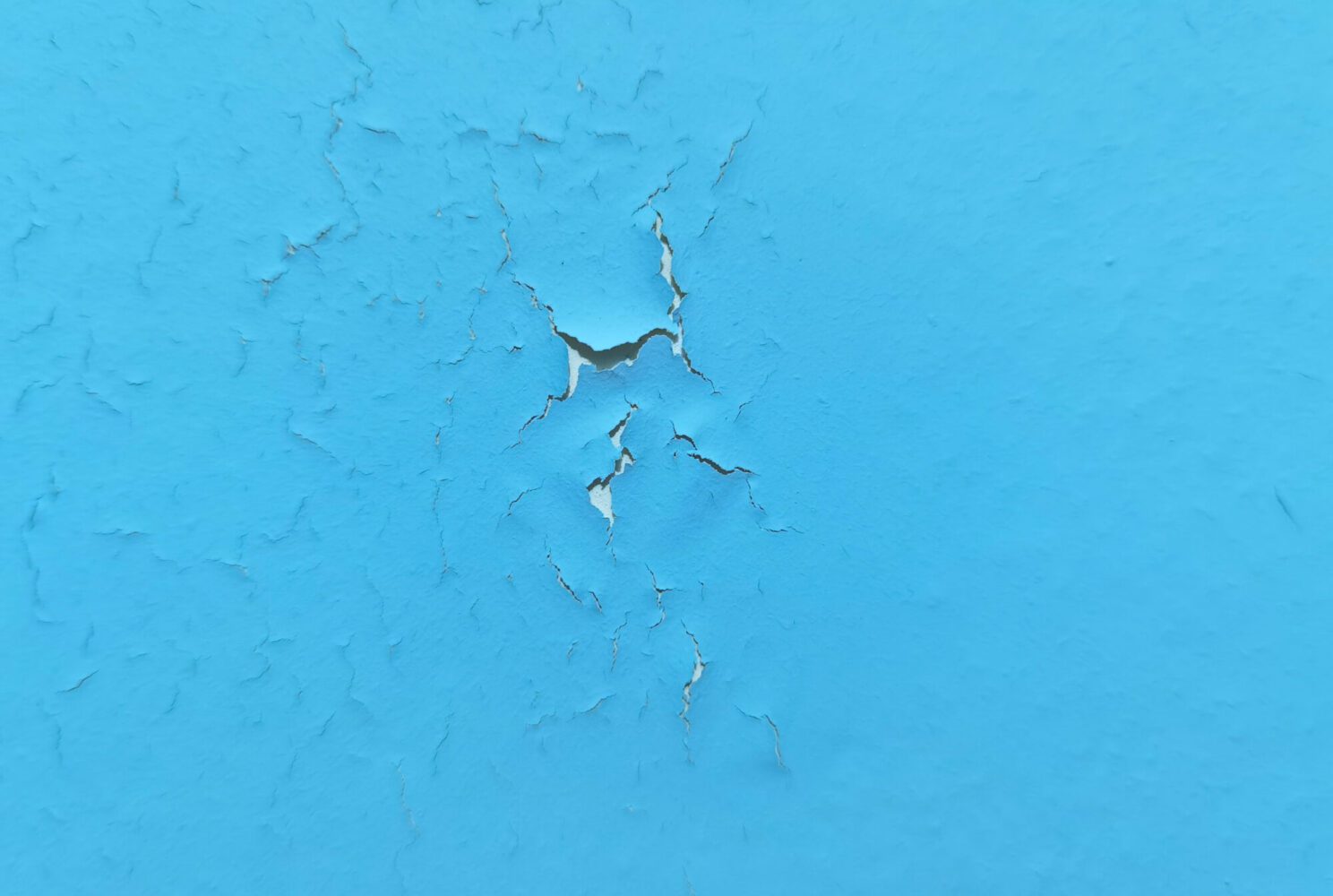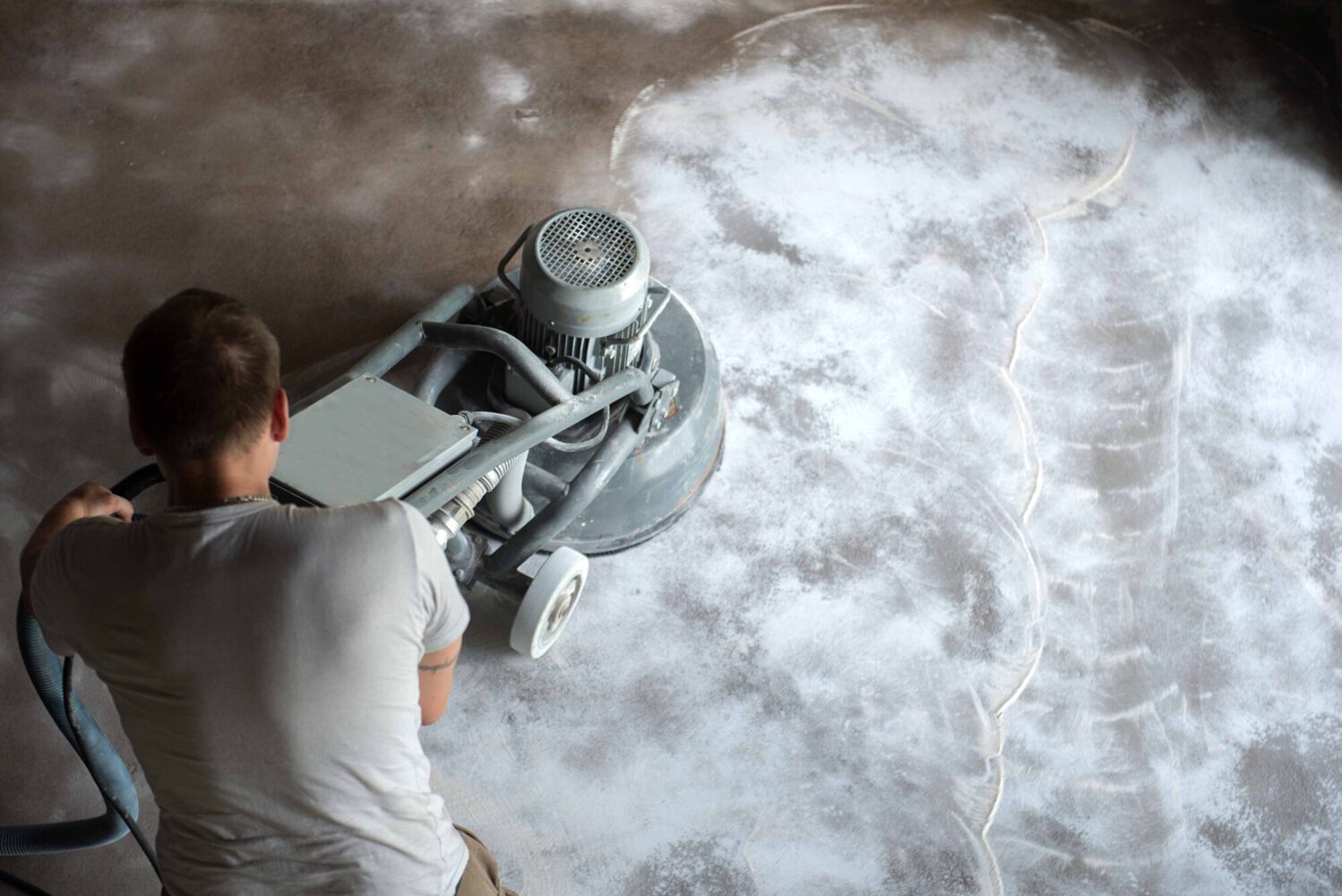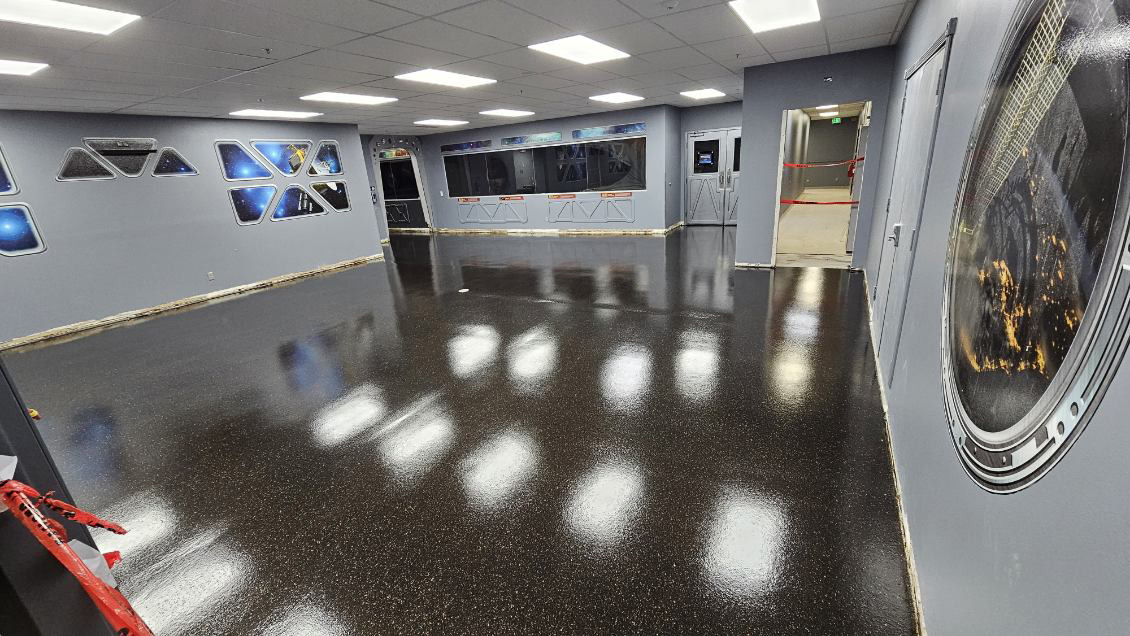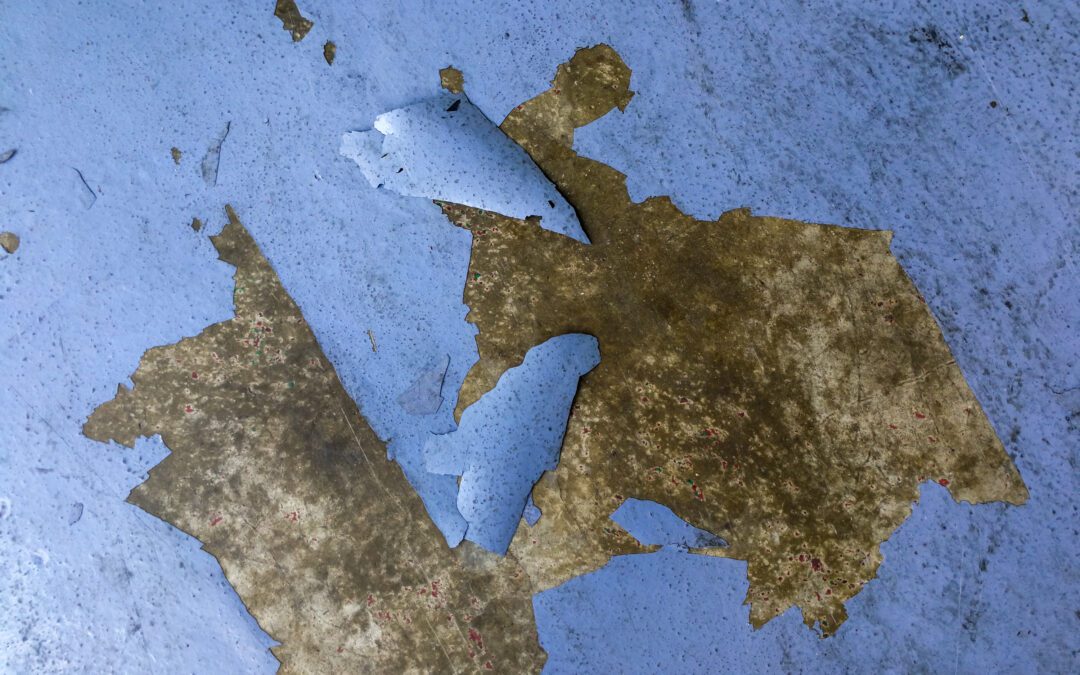Why Is My Epoxy Floor Peeling? Causes and Solutions
Epoxy flooring is a popular choice for commercial spaces because of its durability and aesthetic appeal. However, peeling can undermine these benefits. Understanding the causes and solutions for a peeling epoxy floor is crucial for maintaining its high-quality and longevity.
Causes of Epoxy Floor Peeling
Poor Surface Preparation: Proper surface preparation is vital for a strong bond between the epoxy and the concrete surface. Make sure you clean and etch your concrete floor so the epoxy can bond to the concrete.
Concrete Surface Profile (CSP): Epoxy requires a specific surface profile to adhere properly. This profile is typically achieved through mechanical concrete grinding or acid etching (however this is far inferior to mechanical surface preparation).
If the surface is too smooth or improperly profiled, the epoxy may not bond correctly, leading to peeling. Otherwise, over smoothing creates a weak bond. Ensuring the correct CSP is essential for a durable epoxy coating.
Acid Etching Residue: Acid etching is a common method for preparing concrete, but it leaves behind a fine dust. If this residue is not thoroughly cleaned, the epoxy will bond to the dust rather than the concrete, resulting in peeling. Thoroughly washing and neutralizing the surface after acid etching is critical.
Sealed Concrete: Epoxy may not adhere well to concrete that has been previously sealed and can result in a weak bond. Sealed concrete prevents the epoxy from penetrating and bonding with the substrate. Identifying sealed areas and grinding off the sealer is necessary for proper adhesion.
Concrete Dusting: Concrete dusting occurs when the surface of the concrete is weak and powdery. The epoxy often peels on such surfaces because the bond is compromised. Strengthening or resurfacing the concrete may be required before applying epoxy.
Soft Concrete: Low-quality or improperly finished soft concrete is not a good base for epoxy. This type of concrete is known as bad concrete or poor concrete. This can result in the epoxy peeling as it lacks a stable substrate to adhere to.
Moisture Issues: Moisture in the concrete can cause several problems that lead to epoxy peeling.
Hydrostatic Pressure: Moisture within the concrete slab can create hydrostatic pressure, pushing the epoxy coating away from the surface. This is especially common in below-grade installations where water tables are high or drainage is poor. Moisture barriers and proper sealing moisture primers can mitigate this issue.
Efflorescence: Efflorescence, the migration of salts to the surface of the concrete, indicates moisture movement through the slab. This process can disrupt the bond between the epoxy and the concrete, leading to peeling. Addressing the moisture source and properly cleaning the surface are essential steps.
Contaminants: Contaminants on the concrete surface can interfere with the bonding process.
Oil and Other Contaminants: Oil stains and other contaminants create a barrier between the epoxy and the concrete. This barrier prevents proper adhesion, resulting in peeling. Thorough cleaning with degreasers and other appropriate cleaning agents is necessary to remove these contaminants. Conducting a water drop test can help determine if the surface is adequately prepared.

Solutions and Prevention
Proper Surface Preparation: Investing time and effort in surface preparation is crucial for a successful epoxy application.
Grinding: Mechanical grinding provides a consistent surface profile and removes contaminants, ensuring a better bond for the epoxy. This method is preferred over acid etching for achieving the desired concrete surface profile (CSP).
Acid Etching: When using acid etching, it’s important to neutralize and remove all residues. Thoroughly rinsing the surface after etching helps prevent issues with epoxy adhesion.
Moisture Mitigation: Addressing moisture issues before applying epoxy can prevent peeling.
Moisture Testing: Conducting moisture tests on the concrete slab helps identify potential moisture problems. Use moisture barriers or sealers as needed to prevent hydrostatic pressure and moisture migration.
Efflorescence Treatment: Treating any signs of efflorescence involves cleaning the surface and addressing the underlying moisture issue. Proper sealing can prevent future occurrences.
Addressing Contaminants: Removing contaminants ensures a clean surface for epoxy bonding.
Oil Removal: Using appropriate cleaning methods to remove oil stains and other contaminants is crucial. After cleaning, a water drop test can confirm if the surface is ready for epoxy application.
Avoid Sealed Surfaces: Ensure the concrete surface is not sealed. If it is, mechanically remove the sealer before proceeding with epoxy application.

How General Industrial Flooring Can Help
At General Industrial Flooring, we specialize in commercial epoxy floor installations, ensuring long-lasting, high-quality results. Our team is experienced in:
Surface Preparation: We use professional grinding and profiling techniques to ensure the concrete surface is ideal for epoxy application.
Moisture Control: We conduct thorough moisture testing and apply necessary barriers to prevent hydrostatic pressure issues.
Contaminant Removal: Our comprehensive cleaning processes remove oil stains and other contaminants, ensuring a clean surface for epoxy bonding.

Conclusion
Knowing why epoxy floors peel is important to keep them looking good and lasting long in commercial buildings. At General Industrial Flooring we provide expert solutions to prevent and repair peeling problems. Our goal is to ensure that your epoxy floor lasts for a long time.
For more information or to schedule a consultation, contact us today.
(303) 762-1600

